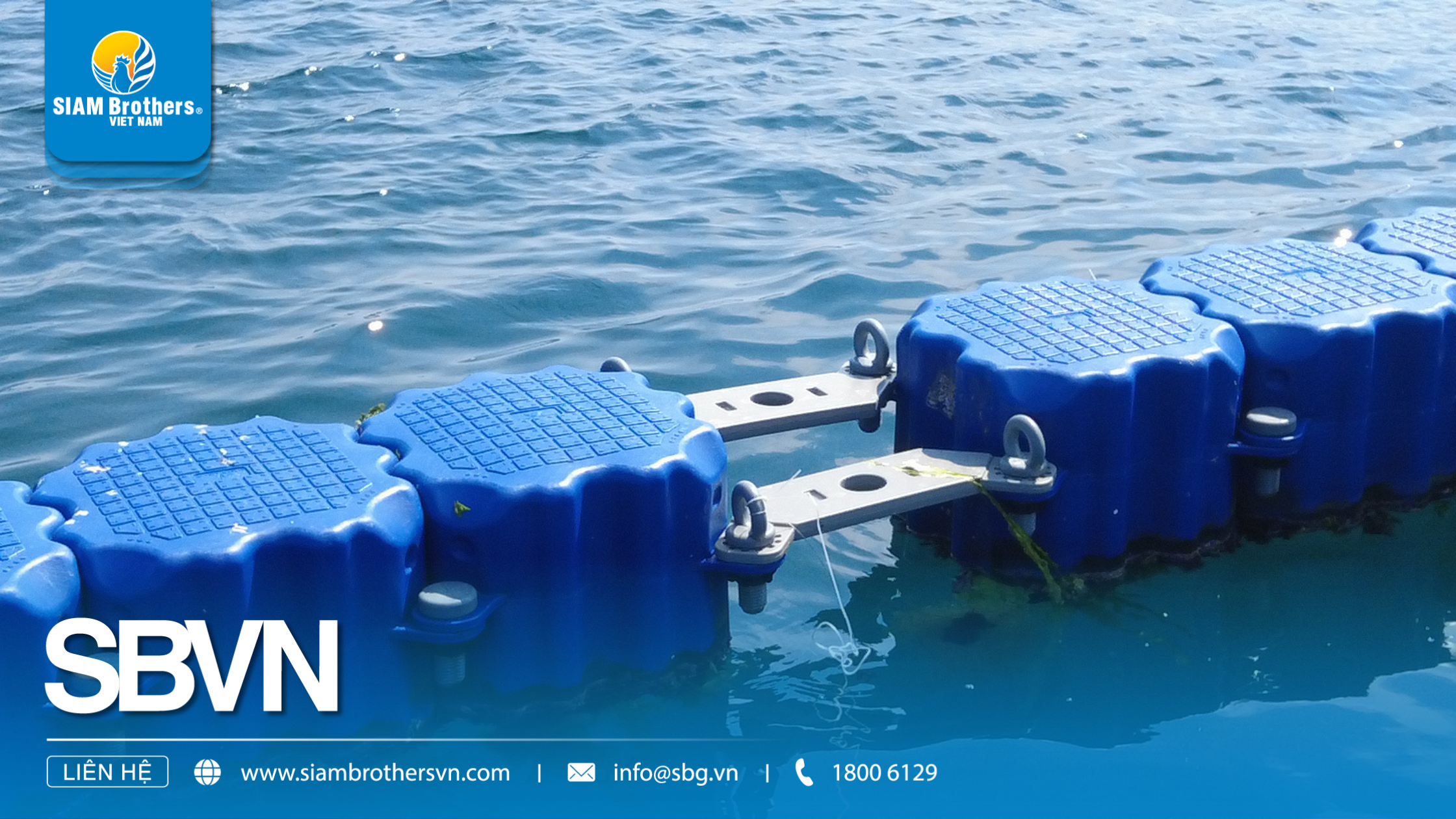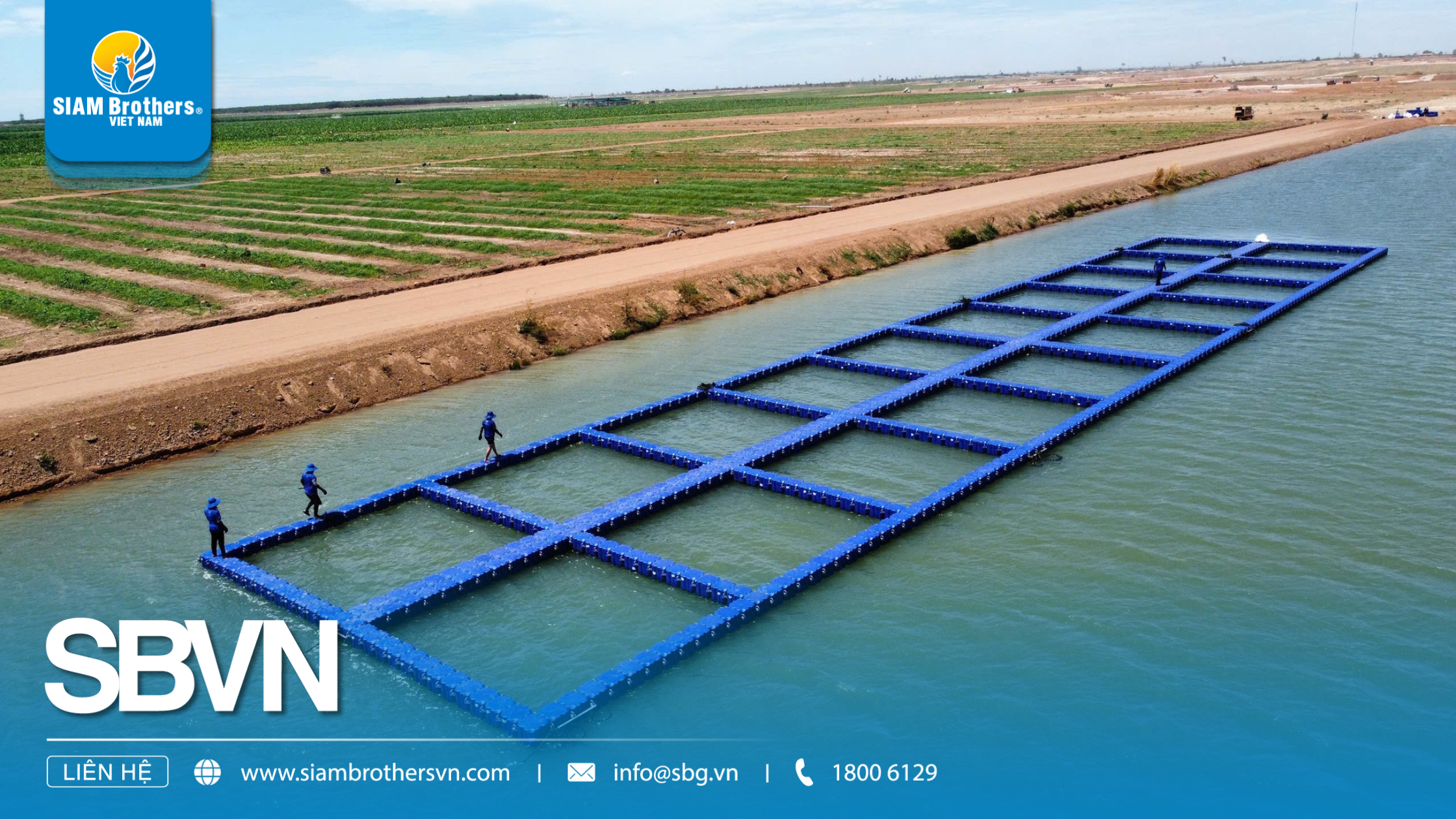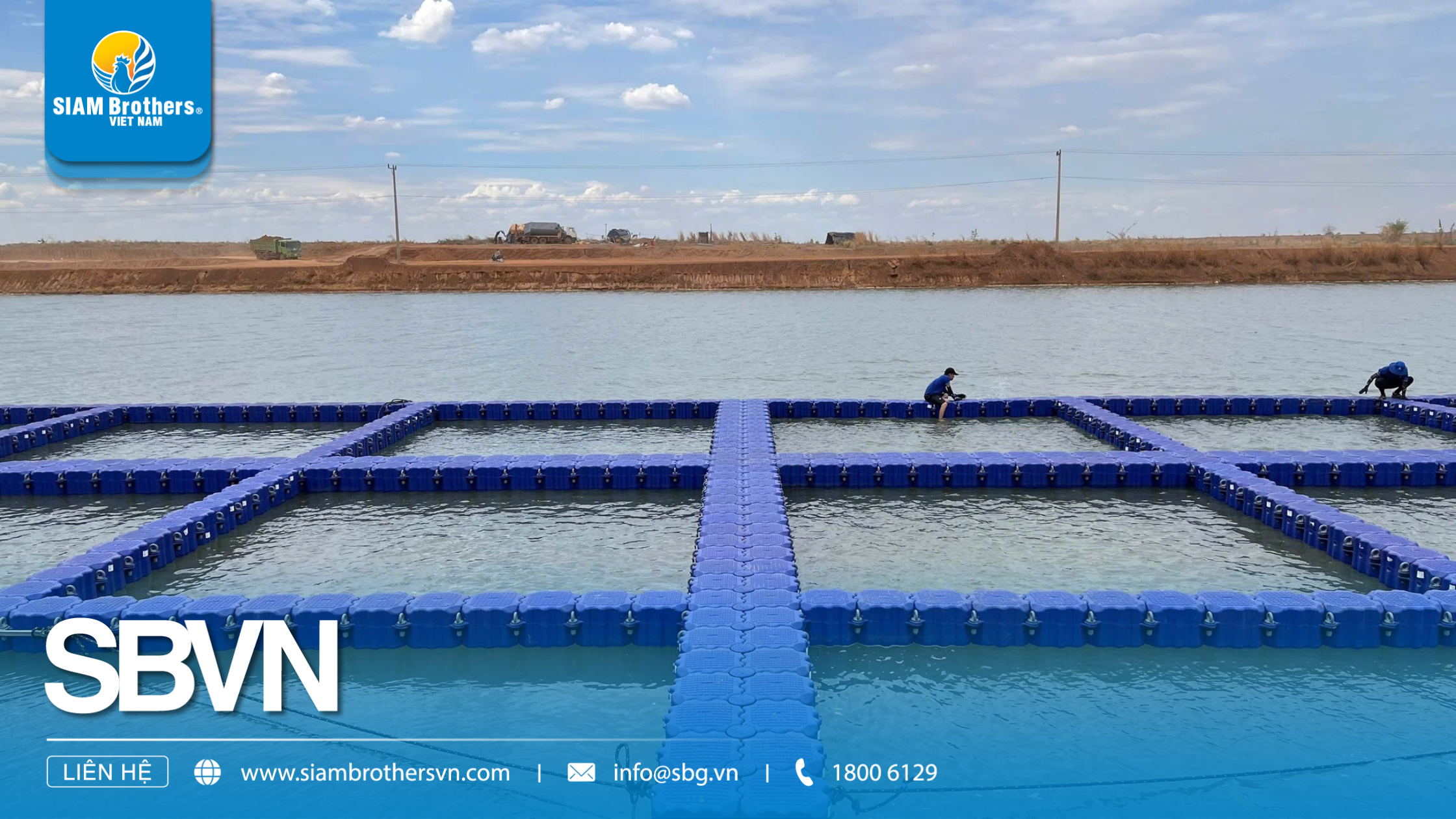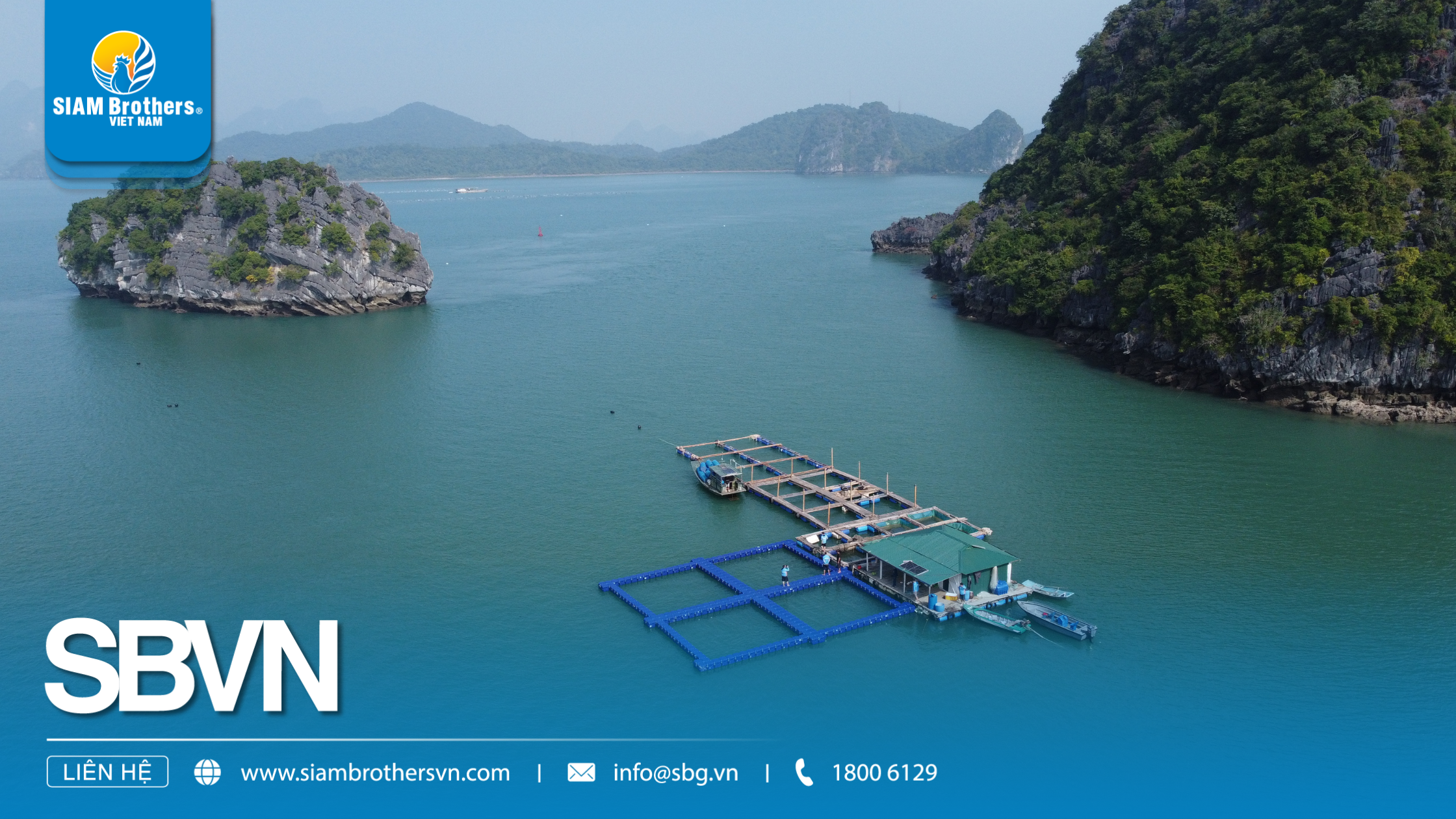HDPE floating buoys are rapidly becoming the leading alternative to traditional foam and plastic buoys thanks to their exceptional durability, safety, and eco-friendly properties. However, to make a smart investment, it’s essential to know how to identify high-quality products and avoid cheap, low-grade options that degrade quickly. In this article, SIAM Brothers Vietnam shares the 5 most important factors you need to consider before buying HDPE floating buoys – from virgin HDPE material, size, and production technology, to choosing a trusted supplier with reliable after-sales service.
1. What Are HDPE Floating Buoys and Why Are They Popular?
HDPE floating buoys (High-Density Polyethylene) are floatation devices made from virgin HDPE – a high molecular density plastic that stands out for its strength, UV resistance, and long-term performance in both freshwater and saltwater environments. They have become the superior replacement for traditional foam or plastic buoys, which often degrade quickly and cause environmental pollution.

1.1 Key Advantages of HDPE Floating Buoys
Thanks to their outstanding features, HDPE floating buoys are increasingly favored in aquaculture, agriculture, and environmental protection:
- High durability: Resistant to waves, wind, and direct sunlight without becoming brittle.
- Corrosion resistance: Unaffected by seawater and chemicals in marine environments.
- Eco-friendly: Recyclable, non-toxic, and safe for the environment.
- Long lifespan: Usable for 10–15 years, reducing replacement costs.
- Flexible applications: Ideal for fish cages, oyster farming, mooring, and floating barriers.
1.2 Why Are HDPE Floating Buoys Becoming More Popular?
Compared to traditional buoys, HDPE floating buoys offer clear, long-term benefits:
- Economic efficiency: Higher upfront cost but significantly longer lifespan reduces lifecycle costs.
- Operational safety: Ensures stability and buoyancy, minimizing risks of cage or raft sinking.
- Sustainability: Supports green aquaculture and reduces plastic waste in oceans.
- Brand credibility: Companies using HDPE floating buoys demonstrate professionalism and environmental commitment.
2. Top 5 Factors to Know Before Investing in HDPE Floating Buoys
2.1 HDPE Material and Product Durability
- Virgin HDPE ensures high impact resistance and strength in both saltwater and freshwater.
- Avoid recycled plastic buoys, as they have a much shorter lifespan (only a few years).
- Wall thickness directly affects load capacity and buoy longevity.
2.2 Load Capacity and Strength
- A crucial factor is how well the buoy supports fish cages, floating docks, or marine structures under harsh weather.
- Always check technical specifications (weight capacity, volume, pressure resistance) before investing.

2.3 UV-Resistant Floating Buoys
- High-quality buoys must include UV protection to resist aging and cracking under prolonged sun exposure.
- Additional resistance to chemicals, oil, and saltwater ensures long-lasting stability.
2.4 Design and Flexibility of Installation
- Modular designs (cube or cylindrical) allow easy assembly, disassembly, and expansion.
- Compatibility with accessories such as connectors, frames, and ropes is essential for scaling or adjusting operations.
2.5 Trusted Supplier and Clear Warranty Policies
Choosing a reputable supplier is critical for ensuring product quality and long-term investment returns:
- Transparent product origin and certified quality.
- Professional technical team offering tailored solutions.
- Strong after-sales services including warranty, installation support, and spare parts supply.
- Investing in HDPE floating buoys from a reliable supplier not only saves costs in the long run but also ensures the safety and stability of your entire system.
3. Benefits of Choosing the Right Quality HDPE Floating Buoy
3.1. Superior Durability in Harsh Environments
- High-quality HDPE floating buoys are manufactured from virgin HDPE material, offering excellent UV resistance and saltwater durability.
- They ensure long service life while minimizing replacement and maintenance costs.
3.2. Safe for Ecosystems and Aquaculture
- The smooth surface of HDPE floating buoys does not release harmful substances, keeping water sources safe and ensuring healthy aquaculture.
- They also reduce algae buildup, creating a cleaner environment for farming
3.3. Stable Buoyancy and High Load Capacity
- HDPE floating buoys deliver outstanding load-bearing capacity, maintaining stability even in large-scale fish cage systems.
- They prevent misalignment of frames and reduce risks during aquaculture operations.

3.4. Long-Term Investment Savings
- Although the initial cost is higher than traditional buoys, HDPE floating buoys provide greater long-term economic value thanks to durability and performance.
- They help reduce repair, replacement, and maintenance costs throughout their lifecycle.
3.5. Easy Installation and System Expansion
- With flexible modular designs, HDPE floating buoys can be easily integrated with different cage frames and structures.
- They allow farmers to expand operations quickly without excessive time and labor.
4. FAQs – Frequently Asked Questions About HDPE Floating Buoys
4.1. What makes HDPE floating buoys better than other types of buoys?
- Superior durability, resistant to cracking or rotting unlike wood or metal buoys.
- UV protection to withstand long exposure to sunlight.
- Hollow yet strong structure ensures stable buoyancy for cages and floating platforms.
- Lightweight, easy to transport, install, and maintain.
4.2. Where are HDPE floating buoys commonly used?
- Aquaculture: fish cages, oyster farming, lobster farming.
- Water transport: mooring buoys, navigation buoys, floating docks.
- Environmental projects: trash barriers on rivers, lakes, and canals.
- Tourism & recreation: marinas, floating bridges, water parks.
4.3. What is the average lifespan of an HDPE floating buoy?
- Their lifespan ranges from 10–15 years under proper usage and standard environments.
- They are designed to withstand mechanical stress, chemicals, and extreme outdoor conditions.
4.4. What should I consider when buying HDPE floating buoys?
- Virgin HDPE material for strength and safety.
- Proper size and load capacity to suit specific applications.
- Reliable supplier with quality certification and after-sales service.
- Smooth surface, UV resistance, and strong structure.
- Long-term value to minimize replacement costs.
4.5. Are HDPE floating buoys safe for aquaculture?
- Yes. Made from eco-friendly virgin HDPE, they are non-toxic to marine life.
- They are strong, resistant to deformation, and ensure safety for cages, farmers, and livestock.
4.6. Do HDPE floating buoys require regular maintenance?
- Minimal maintenance is needed—only periodic cleaning to prevent algae buildup.
- This is a major advantage over steel buoys, which rust easily and demand high upkeep costs.
4.7. How long is the warranty for HDPE floating buoys?
- Depending on the manufacturer, warranties typically range from 3–5 years.
- It’s best to choose suppliers with clear and transparent warranty policies.
4.8. Are HDPE floating buoys easy to transport and install?
- Yes. With modular design, they can be quickly assembled, disassembled, and expanded.
- This reduces labor costs and shortens installation time.
4.9. Where can I buy reliable HDPE floating buoys?
- Choose direct manufacturers to ensure quality, competitive pricing, and clear origins.
- SIAM Brothers Vietnam is a trusted supplier of HDPE floating buoys, widely chosen by aquaculture and agriculture businesses.

HDPE floating buoys are not only an optimal solution for aquaculture systems, ports, and water-based tourism but also a long-term, sustainable investment. To ensure efficiency, safety, and cost savings, consider the five key factors: material durability, load capacity, safety standards, flexible applications, and supplier reliability. Making the right decision from the beginning will help you reduce maintenance costs and maximize operational performance. Don’t let poor-quality products put your business at risk. Contact SIAM Brothers Vietnam today for expert advice and genuine HDPE floating buoys tailored to your needs.
Source: SIAM Brothers Vietnam
Contact us:
► Address: 5th floor, VRG Building, 177 Hai Ba Trung Street., Xuan Hoa Ward, Ho Chi Minh City, Vietnam
► Hotline: 1800 6129
► Tel: (+84) 28 38 912 889
► Email: info@sbg.vn
► Follow us for more details at: Facebook - Zalo OA - Tiktok - Youtube - LinkedIn
Download SBVN ID app here:
► CHPlay
► Appstore





